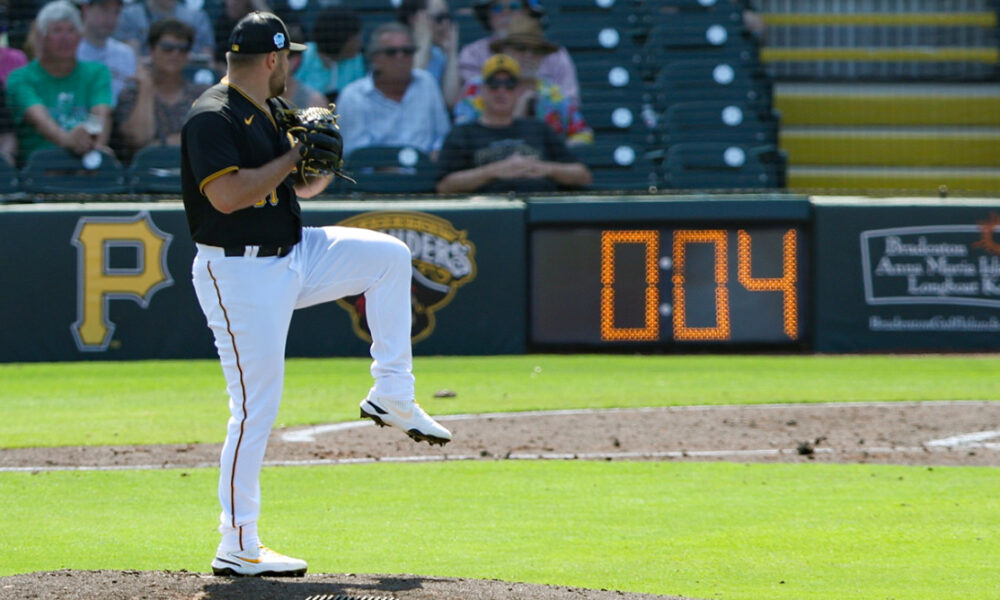Baseball fans, it’s finally here––a new era of the sport is on the horizon. With the average game length coming in at three hours and four minutes, a plummeting fanbase, and offensive output on a steady decline since the juiced ball of 2020, Major League Baseball (MLB) finally recognized its dire position and took action last September, when its competition committee voted to implement a slew of rule changes for the 2023 season.
“I think we’re gonna see a more exciting brand of baseball,” Mike Wilner, former play-by-play announcer for the Toronto Blue Jays and current columnist for the Toronto Star, told The McGill Tribune. “There will be more action more often.”
The new rule changes are set to alter critical aspects of the game, with a pitch timer, bigger bases, shift bans, and pickoff restrictions implemented at the start of Spring Training. Fans got a sneak peek of the impacts in Minor League Baseball (MiLB) games in 2022 during the rules’ testing period. And with average game length dropping from three hours and three minutes in 2021 to two hours and 38 minutes in the 2022 season, it’s safe to say that MLB made the right call.
With the new pitch timer in place, pitchers will have 15 seconds to deliver their pitch with the bases empty and 20 seconds with a runner on base. Hitters will have to be in the batter’s box, ready to hit with eight seconds left on the timer. If the pitcher fails to initiate their motion to deliver the pitch before the expiration of the timer, they will be charged with a ball, and if the batter is not ready to hit at eight seconds, they will be charged with a strike.
“[The pitch timer] is something that is absolutely brand-new that people have never had to deal with before,” Wilner said. “Baseball has always been this game without a clock but [the timer] sort of gets it back to where it was 30-40 years ago.”
Outside of the pitch timer, the shift––a situational defensive realignment where infielders and outfielders shift from their traditional positioning if the hitter has a tendency to hit the ball to a specific part of the field––will no longer be allowed. The shift saw a major increase in use after its employment by the Houston Astros and the Tampa Bay Rays with usage rates skyrocketing league-wide from 6.2 per cent of the time in 2016 to 33.6 per cent in 2022.
“It’s going to open up the infield for ground balls,” Wilner said.“Teams will find ways around it but I do think batting averages are going to go up as a result and especially the left-handed pull hitters.”
The remaining rule changes––outside of restricting instances when position players can pitch, to when a team is winning by 10 or more runs in the ninth inning or losing by eight or more at any time––all hope to revive a crucial element of baseball: Base stealing, an art that has largely been lost over the years.
Bases will increase in size from 15 to 18 inches squared, but the home plate will remain unchanged, giving players more room to maneuver around tags and avoid collisions. Pickoffs—when the pitcher attempts to throw the runner out before delivering the pitch—will be limited to two attempts per plate appearance, and the count will reset if the runner advances. If a third attempt is made, the pitcher will be charged with a balk—when a pitcher makes an illegal motion on the mound with runners on base that the umpire deems to be deceitful to the runners—and the runner will automatically advance. The league announced that it will also crack down on the enforcement of balks, a move that forced a number of pitchers to completely restructure their deliveries.
While some mourn the loss of a game slowed down by the adjusting of velcro, the tossing of the rosin bag, and the rubbing of hands in the dirt, the baseball of 2023 will be a welcome change for the majority of fans. No more dozing off as a 1-0 game on July 15 heads into hour three in the seventh inning. No more yelling at your TV for the batter to get in the goddamn box. A new brand of baseball is upon us and it’s time to get excited.









